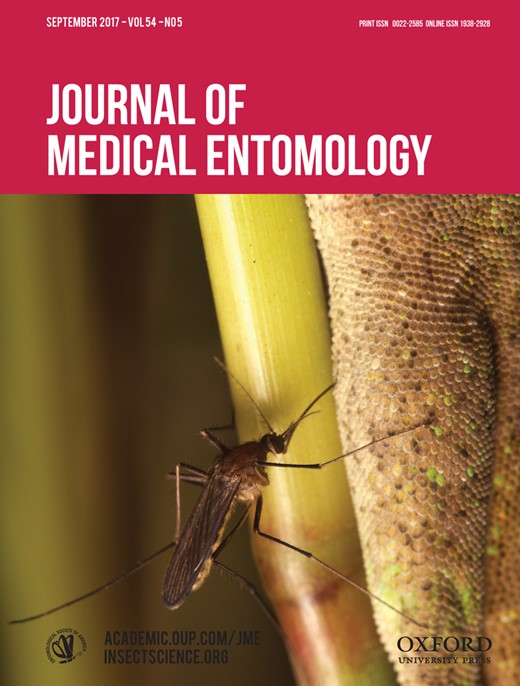-
Views
-
Cite
Cite
P. Foley, J. Foley, A. D. Sándor, A. M. Ionică, I. A. Matei, G. D’Amico, C. M. Gherman, C. Domșa, A. D. Mihalca, Diversity of Flea (Siphonaptera) Parasites on Red Foxes (Vulpes vulpes) in Romania, Journal of Medical Entomology, Volume 54, Issue 5, September 2017, Pages 1243–1250, https://doi.org/10.1093/jme/tjx067
Close - Share Icon Share
Abstract
Red foxes (Vulpes vulpes (L.)) are widespread across Europe, tolerant of synanthropic ecosystems, and susceptible to diseases potentially shared with humans and other animals. We describe flea fauna on red foxes in Romania, a large, ecologically diverse country, in part because fleas may serve as an indicator of the risk of spillover of vector-borne disease. We found 912 individual fleas of seven species on the 305 foxes assessed, for an infestation prevalence of 49.5%. Mean flea load per fox was 5.8 (range 0–44 fleas), and flea detections were most abundant in fall and early spring. Fleas included generalists (Ctenocephalides canis (Curtis), 32.6% of all fleas), Ct. felis (Bouché, 0.1%), and Pulex irritans L. (29.9%), the fox specialist Chaetopsylla globiceps (Taschenberg, 32.5%), mesocarnivore fleas Paraceras melis Walker (3.2%) and Ch. trichosa Kohaut (1.5%), and the small mammal flea Ctenophthalmus assimilis (Taschenberg, 0.1%), which is rarely or never reported from carnivores. There were significantly more female than male Ch. globiceps, Ct. canis, and Pu. irritans, and these three species were the most broadly distributed geographically. Diversity indices suggested reduced diversity in mountainous areas above 700 m. When compared to other flea studies on foxes in Europe, Romania had flea diversity near the median of reports, which was unexpected given Romania’s high ecological diversity. Notably absent prey specialists, compared to other studies, include Archaeopsylla erinacei (Bouché) and Spilopsyllus cuniculi (Dale). Further studies of possible disease agents in fox fleas could help elucidate possible risks of vector-borne disease in foxes, domestic animals, and humans as well.





